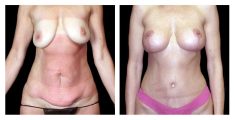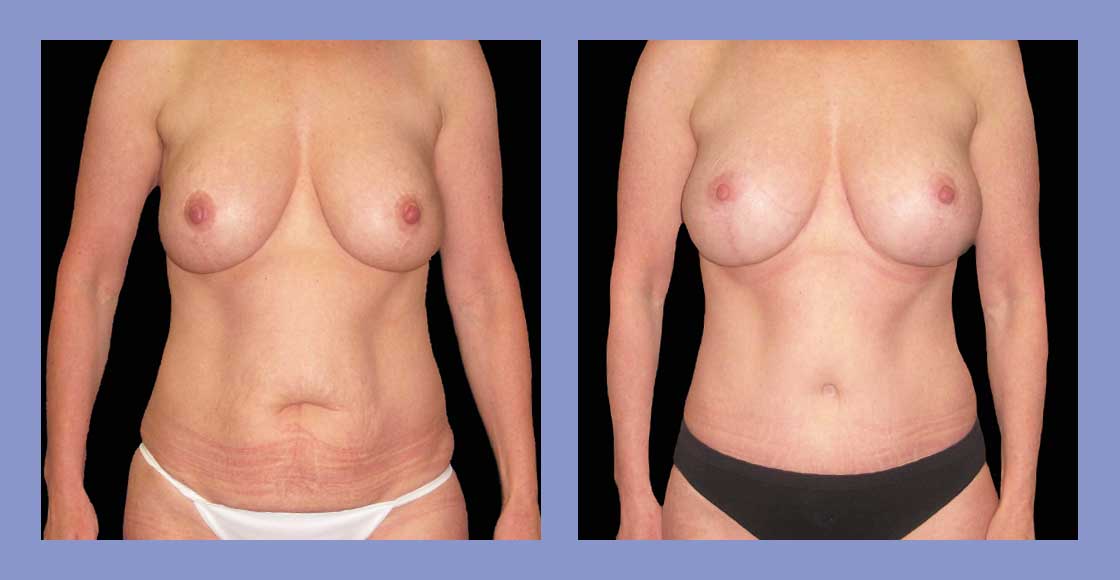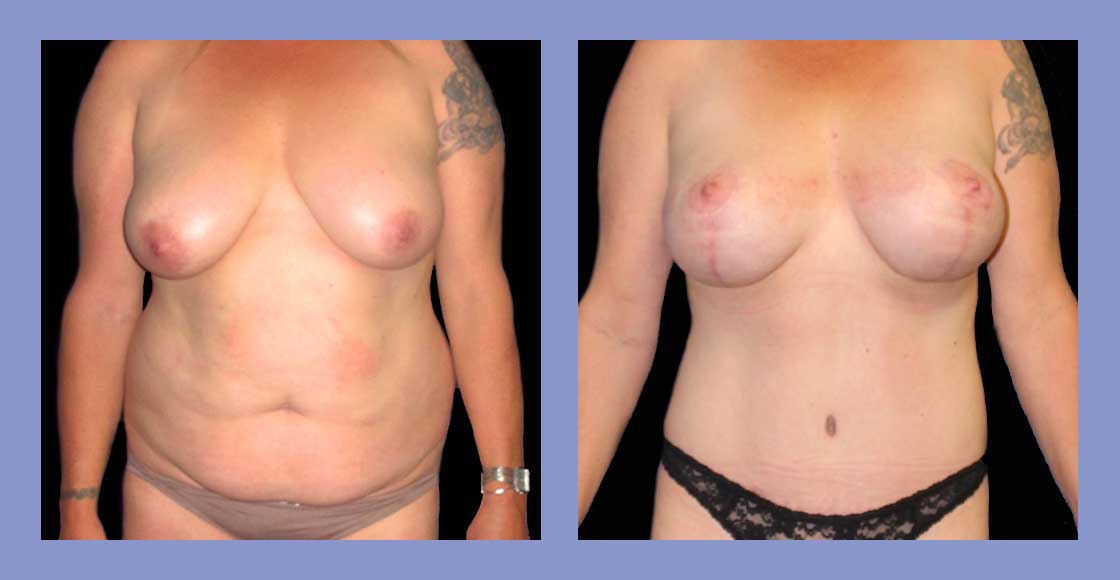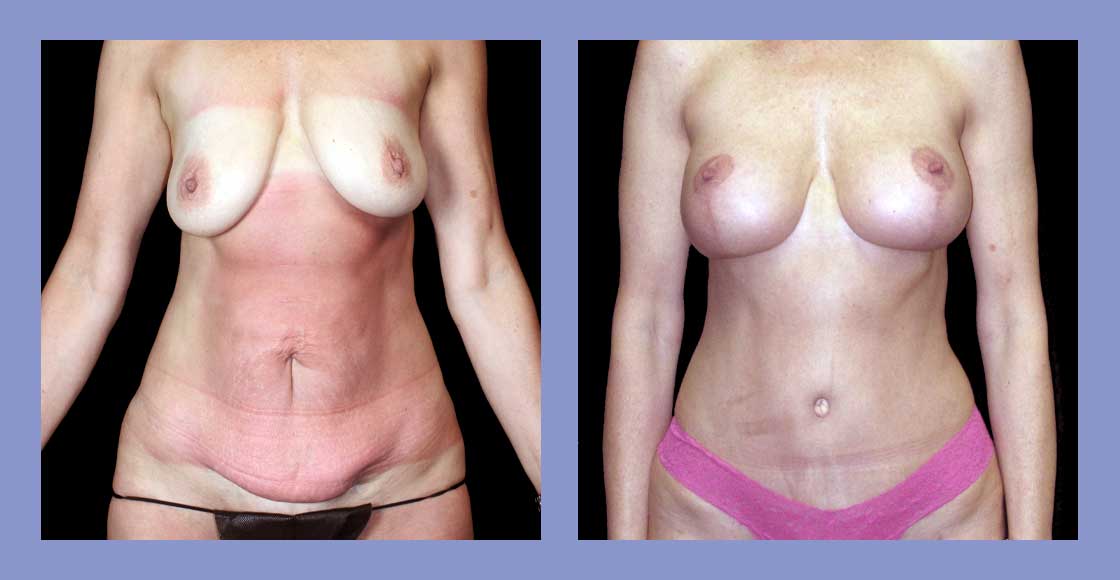— Verve Patient

Mommy Makeover
A mommy makeover is a term that refers to a personalized combination of plastic surgery procedures performed together to restore and enhance your post-pregnancy physique. Each procedure is tailored to your needs, and no two mommy makeovers are alike.
Quick Links
What Is a Mommy Makeover?
Why Get a Mommy Makeover?
Pregnancy stretches your abdominal muscles, skin and tissue to accommodate a growing baby. When you are finished having children, you may be left with loose skin and excess fat that will not respond to diet and exercise. Breasts may be deflated or sag.
Pregnancy and breastfeeding take a physical toll on your body, especially the breasts and abdominal area. A mommy makeover is a great way to restore your pre-baby curves.
The Procedures
Mommy makeovers are customized to each individual patient depending on their concerns and desired results. Depending on the procedure performed, surgery time may vary between 3-6 hours. Recovery may vary from 3-6 weeks.
The Incisions
Abdominoplasty Incision
a horizontal incision is made in the low belly near the pubic area (or prior C-section scar if applicable). The length of the incision depends on the amount of skin that needs to be removed. A new opening will be made for the belly button. You will have a circular scar along the belly button.
Breast Augmentation Incision
A small and discrete incision is created in the breast crease. This is the most commonly used incision as it allows for no-touch placement of the implant with the lowest incident of capsular contracture.
Breast Lift or Reduction Incision
Typically an anchor shaped incision is necessary to lift, reduce and reposition the breast tissue to achieve a nice and full breast. This incision will go around the areola, a vertical incision from the areola to the breast crease and an incision in the breast crease.
Liposuction
Small, 1 centimeter incisions are used to perform liposuction. The exact location of the incision will depend on the area of liposuction. We will hide these small incisions in the most discrete area as possible.
Brazilian Butt Lift
Fat is collected during liposuction and can be injected into the buttocks for added fullness and improved shape. The incision for fat injections is very small, less than 1 centimeter, typically 2-3 are needed per side to allow for the fat to be distributed appropriately.
Procedure Video
[Title screen for Procedure – Mommy Makeover]
[Dr. Gupta speaking to the camera like an interview]
Mommy makeover is essentially a concept. It’s a combination of procedures aimed to give the pre-pregnancy body back to women.
[Illustrations showing the most common mommy makeover procedures]
Most common procedures that we perform under mommy makeovers can include breast augmentation, breast lift AB, abdominoplasty or tummy tuck, and liposuction. But some women will want to add a different set of procedures that can include a neck lift or an arm lift.
[Dr. Gupta speaking to the camera like an interview]
So one good thing about mommy makeovers is that
[Dr. Gupta in the operating room during a mommy makeover procedure]
all of these procedures can be performed at the same time, which means one session of anesthesia for the patients, one set of recovery. Because mommy makeover consists of multiple procedures, the recovery can be two to three weeks long and
[Dr. Gupta speaking to the camera like an interview]
it takes about three weeks before patients feel independent, feel themselves and can begin to see some results.
[Dr. Gupta in a consultation appointment with patient]
During your consultation, we will sit down with you and we will evaluate the body head to toe. We will understand your goals and see what kind of breast shape and size you desire.
[Dr. Gupta speaking to the camera like an interview]
What type of design do we need for tummy tuck? What areas need liposuction if any?
[Before and after images of mommy makeover patients]
Mommy makeovers is our favorite procedure because we see enormous happiness in our patients.
[Patient admiring results in the mirror]
Women regain their pregnancy body back and it changes their lives.
[Closing title screen with Verve Plastic Surgery logo]
[Call today (760) 436-7600]
Recovery
The length of time you will need to heal and recover from an abdominoplasty depends on the extent of the procedure, and whether it is combined with another procedure. Other factors that affect healing time are your age, health and weight.
Everyone is different in the amount of time it takes for them to recover, so numbers provided are only “ballpark” numbers. Typically, it will take up to six weeks to fully recover from a tummy tuck and liposuction; and up to nine months to see final results.
FAQs
You should wait at least 4 weeks before flying and take medications before flying to prevent blood clots in your legs that can travel to your lungs and cause death. Lifting luggage after a tummy tuck can compromise results and increase the risk of bleeding. Ideally, you should wait until you are healed and recovered before flying, that is about 6-8 weeks. By this time, your incision and muscle tightening will be well healed.
- No. Abdominoplasty, liposuction, breast augmentation and breast lift are not covered by insurance. In some instances, breast reduction may be covered by your insurance depending on the specifics of your policy and a special calculation used to determine the weight of breast tissue that must be removed.
- Even with significant weight loss, a large pannus and loose hanging skin around the abdomen an abdominoplasty is not covered by insurance.
- Rectus diastasis occurs when there is stretching of the fascia in between the 2 verticle rectus abdominis muscle. This occurs during pregnancy and weight gain.
- There are no exercises that can be performed to repair or strengthen this area. Surgical intervention is the only way to bring the muscles back together.
We recommend that you are at or very close to your ideal body weight. It is recommended that your BMI be less than 35 in order to keep your surgical risks as low as possible. You can check your BMI below using the BMI calculator:
No. Your original belly button remains attached to the muscles. A new hole is created in the skin for the belly button to emerge.
Request an Appointment
Call (760) 436-7600 or fill out the form to schedule an appointment to discuss your needs in detail


